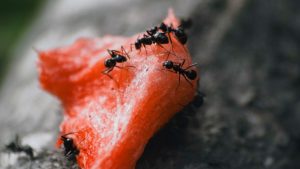The American robin, with its iconic red breast, is a beloved bird across North America. Understanding their lifespan is crucial for appreciating these creatures and implementing effective conservation efforts. This article delves into the factors influencing the longevity of American robins, from their early life stages to potential health challenges.
Overview of the American Robin
The American robin (Turdus migrators) is a medium-sized thrush known for its melodious song and voracious appetite for earthworms. These adaptable birds thrive in a variety of habitats, including forests, suburbs, and parks. Their diet consists primarily of insects, berries, and fruits.

Average Lifespan of American Robins
While the sight of a robin can be a welcome sign of spring, their lifespan is shorter than many might expect. On average, a wild American robin lives for about two years. However, this is a general estimate, and individual lifespans can vary significantly.
Factors such as habitat quality, food availability, and predation play a crucial role in determining how long a robin lives. Those that survive the challenges of their first year have a higher chance of reaching an older age. The oldest recorded wild robin lived for an impressive 13 years and 11 months.
Life Stages and Longevity
An American robin’s life journey begins as a nestling, completely reliant on its parents for food. Once fledged, young robins become more independent but still face numerous threats. As they mature into adults, their survival rate increases.
- Nestling. The most vulnerable stage, with high mortality rates due to weather, predators, and starvation.
- Fledgling. Young robins are learning to fly and forage, but are still susceptible to predators and accidents.
- Adult. While facing ongoing challenges, adult robins have a better chance of survival due to experience and established territories.

Common Health Problems and Their Impact on Lifespan
Like many other wildlife species, American robins encounter various health issues that can affect their lifespan. Some common problems include:
- West Nile virus. This mosquito-borne disease can cause severe illness and death in birds.
- Parasites. Internal and external parasites can weaken robins and make them more vulnerable to other threats.
- Habitat loss and fragmentation. Reduced availability of suitable habitat can impact food sources and nesting opportunities.
These factors, combined with other environmental stressors, can significantly shorten a robin’s lifespan.
Conservation Status and Lifespan
Fortunately, the American robin is classified as a species of the least concern. However, ongoing conservation efforts are essential to protect their habitat and ensure their long-term survival. By preserving healthy ecosystems and reducing threats like pollution and climate change, we can help increase the lifespan of American robins.
Tips for Observing and Supporting American Robins
Supporting American robins is relatively straightforward and can be highly rewarding. To create a bird-friendly environment, start by planting native plants that provide natural food sources and shelter. Offering a bird feeder stocked with fruits and berries can attract robins and give them a convenient food source.
Additionally, setting up a brush pile can offer crucial shelter and protection for these birds, especially during harsh weather or when predators are around. It’s also important to reduce the use of pesticides in your garden, as these chemicals can harm robins and their food sources.
By following these tips, you can contribute to the well-being of American robins and enjoy observing them in your own backyard.

The American robin’s lifespan is a testament to its resilience in the face of various challenges. By understanding the factors influencing their longevity and taking steps to protect their habitat, we can contribute to the well-being of these beloved birds. Let’s work together to ensure that future generations can continue to enjoy the beauty and song of the American robin.



